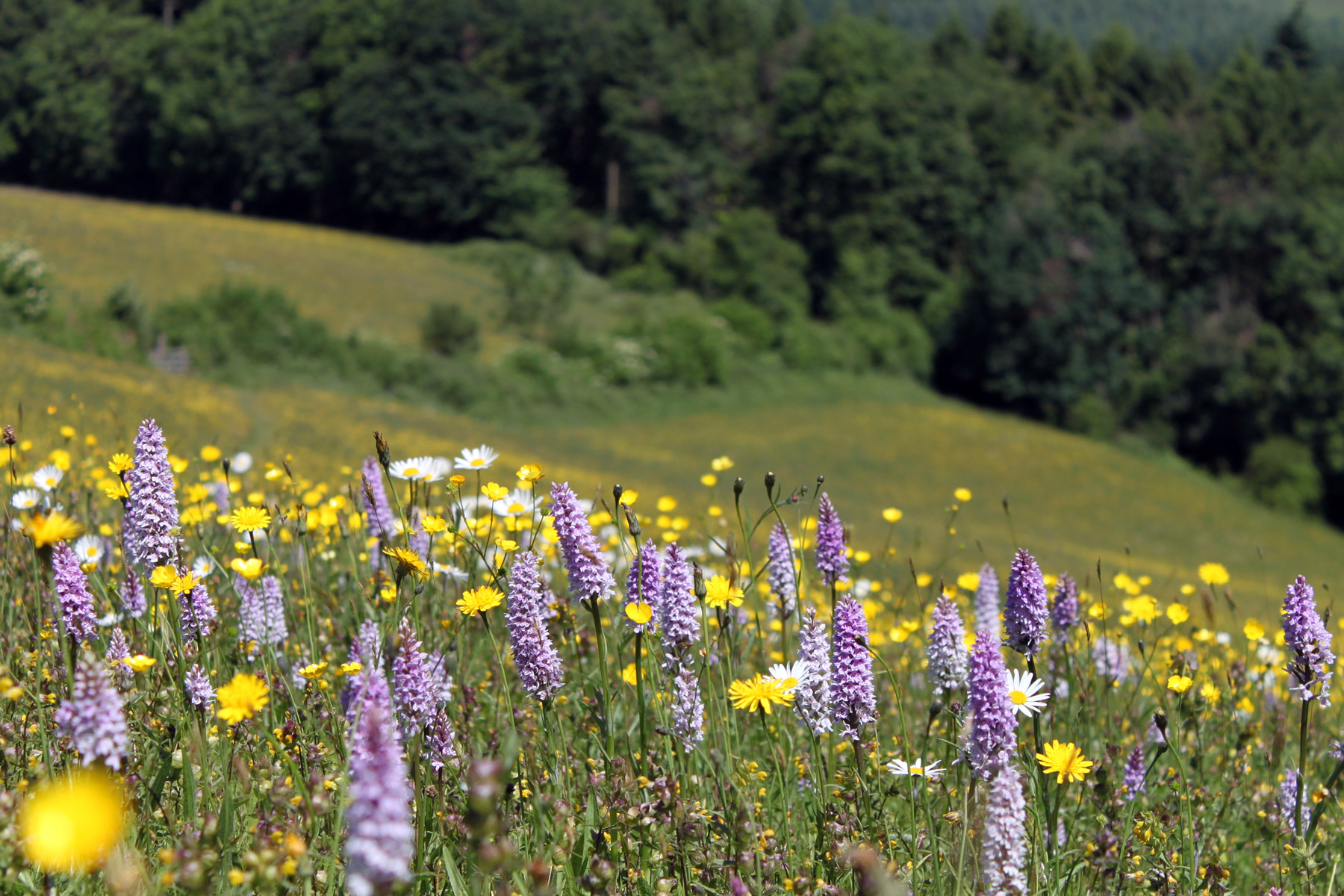Herefordshire Meadows 4th annual Forum was held on 29th February 2020. Over 90 farmers and meadow owners gathered to hear a varied programme of speakers. One farmer commented that the morning provided us with ” how to make a meadow and why we should all be doing it ” all in one session. One of our smallholder members wrote ” The FORUM left me inspired and informed in equal measure. New insights from carbon and soil experts revealed the huge hidden biodiversity right beneath our feet on plant-rich meadow soils, and who knew that a meadow could sequester as much carbon as a woodland! Showcasing small and large scale meadow projects highlighted the range of approaches to creation and maintenance, but in all cases, the passion, patience and dedication of this growing army of Herefordshire meadow makers shone through and bustled with tales of boosted wildlife”.
Four Group members, Steve Hancorn, Hilary Hillier, Claire Adamson and James Hawkins described their experiences of restoring grassland to herb rich meadows. Some started in 2019 as part of the Meadow Making Pilot 2019 and others have been working patiently for 25 years. Each farm used a different technique such as hand broadcasting brush harvested seed, air seeder slot drill, green hay strewing. There was also great variation in the methods used to create enough bare ground and set back the existing grass sward before broadcasting the wildflower seed. All four farms have been using newly gained botanical and bumblebee monitoring skills to do baseline monitoring before the seed was introduced and will continue in future .
Headline speakers were Ben Taylor-Davies who enthused the audience about soil health and soil carbon being the basis for regenerative agriculture. The importance of diversity of soil life, diversity of crops and diversity of plants in our swards of all kinds is the key to future farming using three free components of our environment to grow food; namely sunlight, water and CO2. Ben really challenged the farmers, smallholders and conservationists in the room to think differently. He encouraged everyone to consider how to transform their farming systems to be more profitable, resilient and to mitigate climate change. All this is possible whilst providing the wider public with the ecosystem services such as cleaner water and air, more wildlife and other benefits to the environment and the wider landscape. If you want to read more about any of these topics then please see Ben’s library. Some notes from Ben’s talk will be available in a later Newspost.
Becky Willson, from the Farm Carbon Cutting Toolkit spoke passionately about her work in a talk called Carbon, cows and calculators . Becky supports farmers who want to find out about the carbon footprint of their farm business and how to develop carbon reduction strategies. She told us about exciting new research on carbon sequestration, soils and herb rich grasslands at North Wyke and elsewhere. Becky told us “In the Soil Carbon Project, on diverse swards that are being grazed we are seeing increases in soil organic carbon of between 0.1 and 0.6% per year. If you think that that 0.1% sequesters an extra 9 tonnes per ha, if you are up at 0.6% you are holding 54 tonnes /ha. Broad leaved woodland sequesters between 4.5 – 6 tonnes per year”.
We hope to visit Rothamsted at North Wyke soon to see this research in the field.
Anyone wanting to do the FArm Carbon Cutting Toolkit can come along to an event on 30 March organised by Herefordshire Rural Hub.
